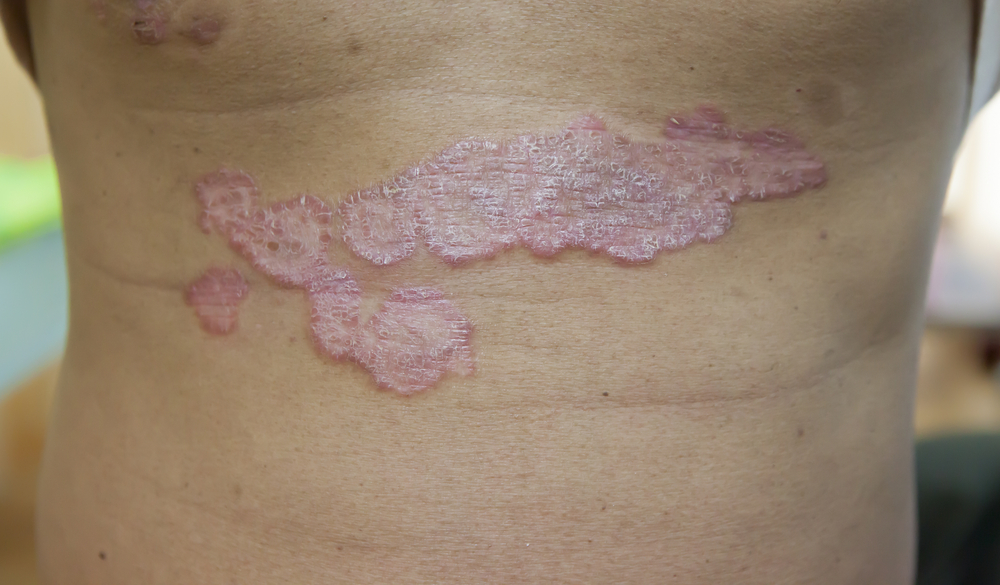On the heels of its U.S. Food and Drug Administration (FDA) approval for three more inflammatory diseases, bimekizumab-bkzx (Bimzelx, UCB) showed efficacy through four years in psoriasis.
Approximately nine out of 10 patients treated with bimekizumab who achieved PASI90 at Year 1, and more than seven out of 10 patients who achieved complete skin clearance (PASI100) at Year 1, maintained this response to Year 4, according to data presented at the European Academy of Dermatology and Venereology (EADV) Congress in Amsterdam.
Bimekizumab is an interleukin (IL)-17A and IL-17F inhibitor. It is currently FDA approved for the treatment of moderate-to-severe plaque psoriasis in adults who are candidates for systemic therapy or phototherapy, adults with active psoriatic arthritis (PsA), adults with active non-radiographic axial spondyloarthritis (nr-axSpA) with objective signs of inflammation, and adults with active ankylosing spondylitis (AS).
Post-hoc Analysis of Pivotal Trials Through Year 4
Data were pooled from the 52-week BE VIVID and 56-week BE SURE and BE READY pivotal Phase 3 trials, and their open-label extension (OLE), BE BRIGHT. These studies included patients were randomized to bimekizumab 20mg every four weeks (Q4W) to Week 16, then bimekizumab Q4W or every eight weeks (Q8W) until OLE entry. Data are reported here for the combined bimekizumab dose group.
Of the 771 patients in this group, 89.6% (n=691) and 75.1%(n=579) were Psoriasis Area and Severity Index-90 (PASI90) score and PASI100 responders at Year 1, respectively.
Of the PASI90 responders at Year 1, 87.9% maintained PASI90 response at Year 4.Of the PASI100 responders at Year 1, 74.2% maintained PASI100 response at Year 4.
“Given the chronic nature of psoriasis, it is critically important to evaluate long-term response of treatments. Achieving completely clear skin is a key goal for people living with moderate-to-severe plaque psoriasis, and results presented at EADV 2024 showed that over 7 out of 10 patients who achieved complete skin clearance after one year maintained this response at four years,” says Richard Warren, BSc (Hons), MBChB (Hons), MRCP PhD, FRCP a dermatologist at The University of Manchester in United Kingdom, in a press release.
Bimekizumab Achieves Lasting Results in Switchers Too
In related news, more than 70% of adalimumab, secukinumab, or ustekinumab PASI90 non-responders who switched to bimekizumab rapidly achieved and maintained PASI90 for up to four years, and more than 40% achieved complete skin clearance based on a post-hoc analysis
The four-year post-hoc analysis included patients from the 56-week BE SURE (bimekizumab vs. adalimumab) and 52-week BE VIVID (bimekizumab vs. ustekinumab) who then entered the BE BRIGHT OLE, and also patients from the 48-week BE RADIANT (bimekizumab vs. secukinumab) who then entered its OLE.2 All patients received bimekizumab Q8W from OLE Week 16/48 (BE RADIANT/BE BRIGHT) or the next scheduled visit.
Of patients randomized to receive adalimumab at baseline who entered the OLE, 41.9% (n=54/129) did not have a PASI90 response at the time of switch to bimekizumab (Week 24). Following switch from adalimumab and after 176 weeks of bimekizumab, 92.2% achieved PASI90 and 74.4% achieved PASI100.
Of patients randomized to receive ustekinumab at baseline who entered the OLE, 33.3% (n=44/132) did not achieve PASI90 at the time of switch to bimekizumab (Week 52).
Following switch from ustekinumab and after 144 weeks of bimekizumab, 82% achieved PASI90 and 58.8% achieved PASI100.
Of patients randomized to receive secukinumab at baseline who entered the OLE, 18.5% (n=58/314) did not achieve PASI90 at the time of switch to bimekizumab (Week 48).
Following switch from secukinumab and after 96 weeks of bimekizumab, 71.7% achieved PASI90 and 39.8% achieved PASI100.


